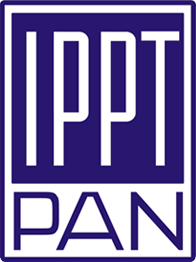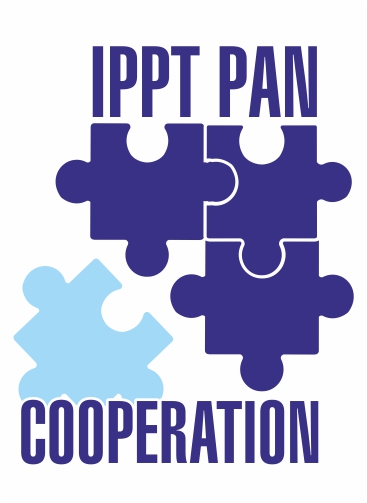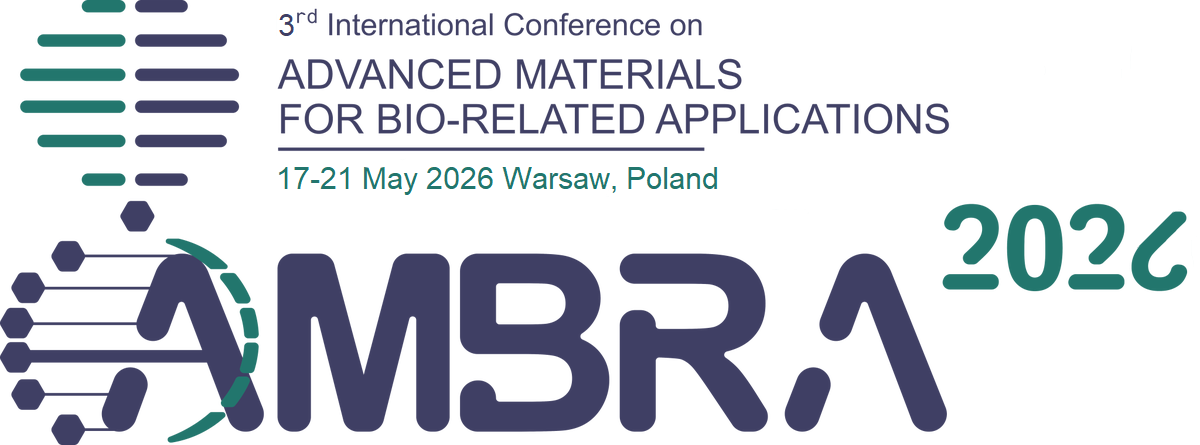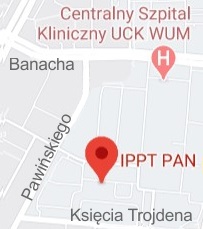| 1. |
Widomski P.♦, Kaszuba M.♦, Barełkowski A.♦, Smolik J.♦, Garbiec D.♦, Ciemiorek-Bartkowska M.♦, Kulikowski K.♦, Lewandowska-Szumieł M.♦, Mościcki T., Gronostajski Z.♦, WTaB coatings as effective solutions for increasing die durability in lead-free brass alloy flashless hot forging process,
WEAR, ISSN: 0043-1648, DOI: 10.1016/j.wear.2025.205849, Vol.571, No.205849, pp.1-10, 2025 Abstract:
The forging of lead-free brass alloys is characterized by low tool durability, presenting a significant challenge in industrial applications. To address this issue, unique magnetron-sputtered coatings based on WB and with the addition of Tantalum, were employed to increase tool life. These coatings were produced from proprietary sintered targets using the SPS-HiPIMS technology. Initially, the coatings underwent laboratory testing, where their microstructure, adhesion to the substrate, and mechanical properties were tested and evaluated. The next phase involved testing these coatings on tools used in hot flashless forging processes. The experiments were conducted on dies that were preliminarily gas-nitrided to provide a suitable substrate for the coating application. The results were compared with those of only nitrided dies.
The study involved the use of nitrided dies, dies with WB2.5 and with W0.76Ta0.24B2.5 coatings. After forging, the tools were observed to assess the wear mechanisms. Surface scans were performed to measure material loss by comparing the surface profiles before and after forging. Scanning Electron Microscopy (SEM) was used to analyze the contribution of various wear mechanisms, such as abrasive wear, thermo-mechanical fatigue, and plastic deformation, to the overall tool wear.
The results confirmed the beneficial impact of these coatings on enhancing tool durability. In certain cases, the service life of the tools was extended by up to 50 %. This study demonstrates that the application of newly developed W0.76Ta0.24B2.5 coating which can significantly improve the durability of tools used in the flashless forging of lead-free brass alloys, offering a promising solution for industrial manufacturing challenges. Affiliations:
| Widomski P. | - | other affiliation | | Kaszuba M. | - | other affiliation | | Barełkowski A. | - | other affiliation | | Smolik J. | - | other affiliation | | Garbiec D. | - | Metal Forming Institute, Poznań (PL) | | Ciemiorek-Bartkowska M. | - | other affiliation | | Kulikowski K. | - | other affiliation | | Lewandowska-Szumieł M. | - | other affiliation | | Mościcki T. | - | IPPT PAN | | Gronostajski Z. | - | other affiliation |
| 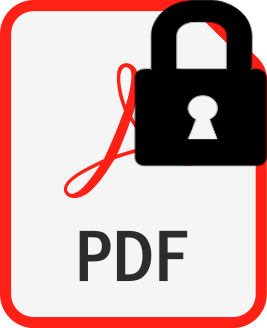 |
| 2. |
Psiuk R., Mościcki T., Chrzanowska-Giżyńska J., Kurpaska ♦, Radziejewska J.♦, Denis P., Garbiec D.♦, Chmielewski M.♦, Mechanical and Thermal Properties of W-Ta-B Coatings Deposited by High-Power Impulse Magnetron Sputtering (HiPIMS),
Materials, ISSN: 1996-1944, DOI: 10.3390/ma16020664, Vol.16, No.2, pp.1-12, 2023 Abstract:
We present the deposition and characterization of tungsten-tantalum diboride (W,Ta)B2 coatings prepared by the high-power impulse magnetron sputtering technique. We evaluated the influence of pulse duration and substrate bias on the properties of (W,Ta)B2 films. A high hardness of up to 35 GPa measured by nanoindentation was simultaneously obtained with good elastic properties. Changing the pulse duration greatly affected the B/(W+Ta) atomic ratio, which influenced the properties of the coatings. The deposited films are thermally stable at up to 1000 ◦C in vacuum and are able to withstand oxidation at 500 ◦C. Keywords:
tungsten diboride, high power impulse magnetron sputtering (HiPIMS), hardness, thermal stability, oxidation resistance Affiliations:
| Psiuk R. | - | IPPT PAN | | Mościcki T. | - | IPPT PAN | | Chrzanowska-Giżyńska J. | - | IPPT PAN | | Kurpaska | - | National Centre for Nuclear Research (PL) | | Radziejewska J. | - | other affiliation | | Denis P. | - | IPPT PAN | | Garbiec D. | - | Metal Forming Institute, Poznań (PL) | | Chmielewski M. | - | Institute of Electronic Materials Technology (PL) |
| 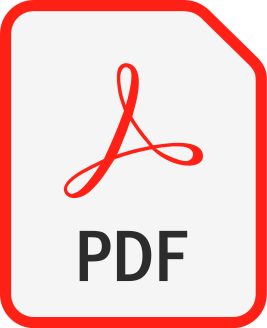 |
| 3. |
Mościcki T., Chrzanowska-Giżyńska J., Psiuk R., Denis P., Mulewska K.♦, Kurpaska Ł.♦, Chmielewski M.♦, Wiśniewska M.♦, Garbiec D.♦, Thermal and mechanical properties of (W,Zr)B2-z coatings deposited by RF magnetron sputtering method,
International Journal of Refractory Metals and Hard Materials, ISSN: 0263-4368, DOI: 10.1016/j.ijrmhm.2022.105811, Vol.105, pp.105811-1-8, 2022 Abstract:
Magnetron sputtered WB2 coatings doped with 8, 11 and 16 at.% zirconium were analysed using energy dispersive spectroscopy, X-ray diffraction and nanoindentation under the load of 4, 7 and 10 mN. It has been observed that these coatings crystallize in the α-AlB2 and ω-W2B5 prototype structure. Phenomenon responsible for this is an increase of the zirconium content which causes an increase in the ω-W2B5 phase. All the deposited coatings have a hardness of about 45 GPa while Young's modulus drops down from 497 to 480 GPa with increasing zirconium content. Coatings without doping and doped with 16 at.% zirconium were annealed at 650 °C and subjected to cyclic thermal loads using a maximum temperature 600 °C and cooling with a compressed air. It has been observed that addition of zirconium improved coatings phase stability. Keywords:
superhard coatings, tungsten diboride, zirconia doping, magnetron sputtering, cycling thermal loads, annealing Affiliations:
| Mościcki T. | - | IPPT PAN | | Chrzanowska-Giżyńska J. | - | IPPT PAN | | Psiuk R. | - | IPPT PAN | | Denis P. | - | IPPT PAN | | Mulewska K. | - | National Centre for Nuclear Research (PL) | | Kurpaska Ł. | - | National Centre for Nuclear Research (PL) | | Chmielewski M. | - | Institute of Electronic Materials Technology (PL) | | Wiśniewska M. | - | Łukasiewicz Research Network – Metal Forming Institute (PL) | | Garbiec D. | - | Metal Forming Institute, Poznań (PL) |
|  |
| 4. |
Garbiec D.♦, Wiśniewska M.♦, Psiuk R., Denis P., Levintant-Zayonts N., Leshchynsky V.♦, Rubach R.♦, Mościcki T., Zirconium alloyed tungsten borides synthesized by spark plasma sintering,
ARCHIVES OF CIVIL AND MECHANICAL ENGINEERING, ISSN: 1644-9665, DOI: 10.1007/s43452-021-00188-5, Vol.21, pp.37-1-15, 2021 Abstract:
Tungsten borides (WBx; x = 2.5 or 4.5) with an increasing substitution of tungsten by zirconium from 0 to 24 at.% were synthesized by spark plasma sintering (SPS) for the first time. The influence of the holding time (2.5–30 min) on the densification behavior, microstructure evolution and development of the properties of W–Zr–B compounds were studied. The samples were characterized using scanning electron microscopy (SEM) for microstructure analysis, X-ray diffraction (XRD) for phase identification, Vickers micro-indentation for microhardness measurements, tribological tests to determine the coefficient of friction and specific wear rate, as well as measurements of electrical conductivity. The XRD results confirm the presence of the WB4 phase in the microstructure, despite the high sintering temperature (1800 °C) and small overstoichiometric excess of boron (4.5) addition in the sintered samples. This is caused by the high heating rate (400 °C/min), short holding time (2.5 min) and addition of zirconium. The Vickers hardness (HV) values measured at 1 N are 24.8 ± 2.0 and 26.6 ± 1.8 GPa for 24 at.% zirconium in WB2.5 and for 0 at.% zirconium in WB4.5, respectively. In addition, the hardest sample (W0.76Zr0.24B2.5) showed electrical conductivity up to 3.961·10^6 S/m, which is similar to WC–Co cemented carbides. The friction and wear test results reveal the formation of a boron-based film which seems to play the role of a solid lubricant. Affiliations:
| Garbiec D. | - | Metal Forming Institute, Poznań (PL) | | Wiśniewska M. | - | Łukasiewicz Research Network – Metal Forming Institute (PL) | | Psiuk R. | - | IPPT PAN | | Denis P. | - | IPPT PAN | | Levintant-Zayonts N. | - | IPPT PAN | | Leshchynsky V. | - | other affiliation | | Rubach R. | - | other affiliation | | Mościcki T. | - | IPPT PAN |
|  |
| 5. |
Mościcki T., Psiuk R., Radziejewska J.♦, Wiśniewska M.♦, Garbiec D.♦, Properties of spark plasma sintered compacts and magnetron sputtered coatings made from Cr, Mo, Re and Zr alloyed tungsten diboride,
Coatings, ISSN: 2079-6412, DOI: 10.3390/coatings11111378, Vol.11, No.11, pp.1378-1-15, 2021 Abstract:
To enhance the properties of tungsten diboride, we have synthesized and characterized solid solutions of this material with chromium, molybdenum, rhenium and zirconium. The obtained materials were subsequently deposited as coatings. Various concentrations of these transition metal elements, ranging from 0.0 to 24.0 at.%, on a metals basis, were made. Spark plasma sintering was used to synthesize these refractory compounds from the pure elements. Elemental and phase purity of both samples (sintered compacts and coatings) were examined using energy dispersive X-ray spectroscopy and X-ray diffraction. Microindentation was utilized to measure the Vickers hardness. X-ray diffraction results indicate that the solubility limit is below 8 at.% for Mo, Re and Zr and below 16 at.% for Cr. Above this limit both diborides (W,TM)B2 are created. Addition of transition metals caused decrease of density and increase of hardness and electrical conductivity of sintered compacts. Deposited coatings W1−xTMxBy (TM = Cr, Mo, Re, Zr; x = 0.2; y = 1.7–2) are homogenous, smooth and hard. The maximal hardness was measured for W-Cr-B films and under the load of 10 g was 50.4 ± 4.7 GPa. Deposited films possess relatively high fracture toughness and for WB2 coatings alloyed with zirconium it is K1c = 2.11 MPa m^1/2. Keywords:
ternary tungsten boride, spark plasma sintering, magnetron sputtering, electrical conductivity Affiliations:
| Mościcki T. | - | IPPT PAN | | Psiuk R. | - | IPPT PAN | | Radziejewska J. | - | other affiliation | | Wiśniewska M. | - | Łukasiewicz Research Network – Metal Forming Institute (PL) | | Garbiec D. | - | Metal Forming Institute, Poznań (PL) |
|  |
| 6. |
Mościcki T., Psiuk R., Słomińska H., Levintant-Zayonts N., Garbiec D.♦, Pisarek M.♦, Bazarnik P.♦, Nosewicz S., Chrzanowska-Giżyńska J., Influence of overstoichiometric boron and titanium addition on the properties of RF magnetron sputtered tungsten borides,
SURFACE AND COATINGS TECHNOLOGY, ISSN: 0257-8972, DOI: 10.1016/j.surfcoat.2020.125689, Vol.390, pp.125689-1-12, 2020 Abstract:
In this work, (W,Ti)B2 films with different stoichiometric ratio Ti/W deposited on silicon and 304 stainless steel by radio frequency magnetron sputtering are presented. The coatings were deposited from plasma spark sintered targets obtained from the mixture of pure boron, tungsten and titanium powders. It is shown that during plasma spark sintering process using overstoichiometric boron and a low content of titanium change the WB2 to WB4 phase with almost no secondary phases. Subsequently, the impact of titanium content on the films properties is investigated systematically, including the chemical and phase composition, crystalline structure, surface and cross-section morphology. Simultaneously, nano-indentation test and ball-on-disk tribometery are performed to analyse the hardness and tribological properties of the films. It is shown that deposited films with titanium content of 3.6 and 5.5 at.% are formed in the zone T of the Thornton's Structural Zone Model. In opposite to α-WB2 magnetron sputtered coatings they are more flexible and hard nanocomposite coatings. The results show that the addition of titanium is apparently changing the film structure from nanocrystalline columnar to amorphous, very dense and compact structure with the addition of TiB2 phase. That films are simultaneously hard (H > 37.5 GPa), have high hardness to effective Young's modulus ratio values (H/E* > 0.1) and elastic recovery (We > 60%) appropriate for tough and resistant to cracking materials. The presented (W,Ti)B2 films exhibit also tribological and corrosion properties better than unalloyed coatings. Keywords:
superhard films, ternary tungsten borides, RF magnetron sputtering, wear resistance, corrosion Affiliations:
| Mościcki T. | - | IPPT PAN | | Psiuk R. | - | IPPT PAN | | Słomińska H. | - | IPPT PAN | | Levintant-Zayonts N. | - | IPPT PAN | | Garbiec D. | - | Metal Forming Institute, Poznań (PL) | | Pisarek M. | - | Institute of Physical Chemistry, Polish Academy of Sciences (PL) | | Bazarnik P. | - | Warsaw University of Technology (PL) | | Nosewicz S. | - | IPPT PAN | | Chrzanowska-Giżyńska J. | - | IPPT PAN |
|  |
| 7. |
Chrzanowska-Giżyńska J., Denis P., Hoffman J., Giżyński M.♦, Mościcki T., Garbiec D.♦, Szymański Z., Tungsten borides layers deposited by a nanosecond laser pulse,
SURFACE AND COATINGS TECHNOLOGY, ISSN: 0257-8972, DOI: 10.1016/j.surfcoat.2017.12.040, Vol.335, pp.181-187, 2018 Abstract:
Tungsten borides belong to the group of potentially superhard materials which hardness could be compared to cubic boron nitride and diamond. However, difficulty in fabrication of single phase material using conventional methods is the main drawback of this group of ceramics. In order to overcome this problem material can be deposited as a thin layer e.g. in the pulsed laser deposition process. In this paper, the effect of laser wavelength and energy density of nanosecond Nd:YAG laser on the WBx-type layers were analyzed using wavelengths 355 and 1064 nm with the energy density of laser beam from 1.7 to 5 J/cm2 and from 1.7 to 9.3 J/cm2, respectively. The WB2.5 and WB4.5 targets synthesized in Spark Plasma Sintering process were used and the layers were deposited onto Si (100) substrate heated to a temperature of 570 °C. Layers' microstructure were analyzed using X-ray Diffraction and scanning electron microscope equipped with energy dispersive X-ray spectrometer. Change of laser wavelength and energy density resulted in variations of the chemical composition and morphology of deposited layers. Finally, W2B-βWB, αWB-WB-WB3 and WB3, and boron layers were deposited wherein WB3 structure is formed in a wide range of laser fluences and at both investigated wavelength. Next, WB3 layers were investigated in the indentation test at a load of 5–30 mN and its hardness was up to 50 ± 10 GPa Keywords:
Pulsed laser deposition, Super-hard materials, Tungsten borides, Tungsten triboride Affiliations:
| Chrzanowska-Giżyńska J. | - | IPPT PAN | | Denis P. | - | IPPT PAN | | Hoffman J. | - | IPPT PAN | | Giżyński M. | - | Warsaw University of Technology (PL) | | Mościcki T. | - | IPPT PAN | | Garbiec D. | - | Metal Forming Institute, Poznań (PL) | | Szymański Z. | - | IPPT PAN |
|  |
| 8. |
Mościcki T., Radziejewska J., Hoffman J., Chrzanowska J., Levintant-Zayonts N., Garbiec D.♦, Szymański Z., WB2 to WB3 phase change during reactive spark plasma sintering and pulsed laser ablation/deposition processes,
CERAMICS INTERNATIONAL, ISSN: 0272-8842, DOI: 10.1016/j.ceramint.2015.03.042, Vol.41, pp.8273-8281, 2015 Abstract:
Reactive spark plasma sintering (SPS) of WB2/WB3 ceramics from elements is studied; the sintering pressure dependence of the ratio of WB3 to WB2 in samples produced by SPS is discussed. Regardless of the sintering pressure, the obtained samples are very hard ~20 GPa. WB3 superhard films prepared by pulsed laser deposition (PLD) from selected SPS targets are presented.
WB3 coatings were prepared on Si (100) substrates using a nanosecond, Nd:YAG laser operating at a 355 nm wavelength. The phase analysis, crystallography, and orientations have been studied using X-ray diffraction (XRD). A WB2 to WB3 phase transformation from 8.2% WB3 in a sintered target to 93.3% WB3 in a deposited film was observed. Additionally, the surface of a SPS sintered WBx target after the ablation process was examined. XRD studies show that already during the laser ablation there is a significant WB2 to WB3 phase transformation. Vickers hardness of sintered samples was measured in macro- and micro-scale, and PLD films in the nanoscale. Keywords:
Films, Tungsten borides, SPS – sintering, Pulsed laser ablation/deposition Affiliations:
| Mościcki T. | - | IPPT PAN | | Radziejewska J. | - | IPPT PAN | | Hoffman J. | - | IPPT PAN | | Chrzanowska J. | - | IPPT PAN | | Levintant-Zayonts N. | - | IPPT PAN | | Garbiec D. | - | Metal Forming Institute, Poznań (PL) | | Szymański Z. | - | IPPT PAN |
|  |
| 9. |
Garbiec D.♦, Jurczyk M.♦, Levintant-Zayonts N., Mościcki T., Properties of Al–Al2O3 composites synthesized by spark plasma sintering method,
ARCHIVES OF CIVIL AND MECHANICAL ENGINEERING, ISSN: 1644-9665, DOI: 10.1016/j.acme.2015.02.004, Vol.15, No.4, pp.933-939, 2015 Abstract:
This work presents fabrication and characterization of Al–Al2O3 composite materials with a 5%, 10%, 15% and 20% volume fraction of reinforcing phase particles. The spark plasma sintering method was applied for the purpose of fabricating these materials. The obtained Al–Al2O3 composites were characterized with an porosity from 1.27% to 5.07%. It was proven that as the content of hard ceramic particles increases in the composite, its density, hardness, and compression as well as tensile strength increase. The conducted study showed that a composite with 20% alumina content is characterized by a larger hardness (1355 MPa) and compression strength (247 MPa). Keywords:
Spark plasma sintering, Composite material, Aluminum, Alumina Affiliations:
| Garbiec D. | - | Metal Forming Institute, Poznań (PL) | | Jurczyk M. | - | other affiliation | | Levintant-Zayonts N. | - | IPPT PAN | | Mościcki T. | - | IPPT PAN |
|  |















